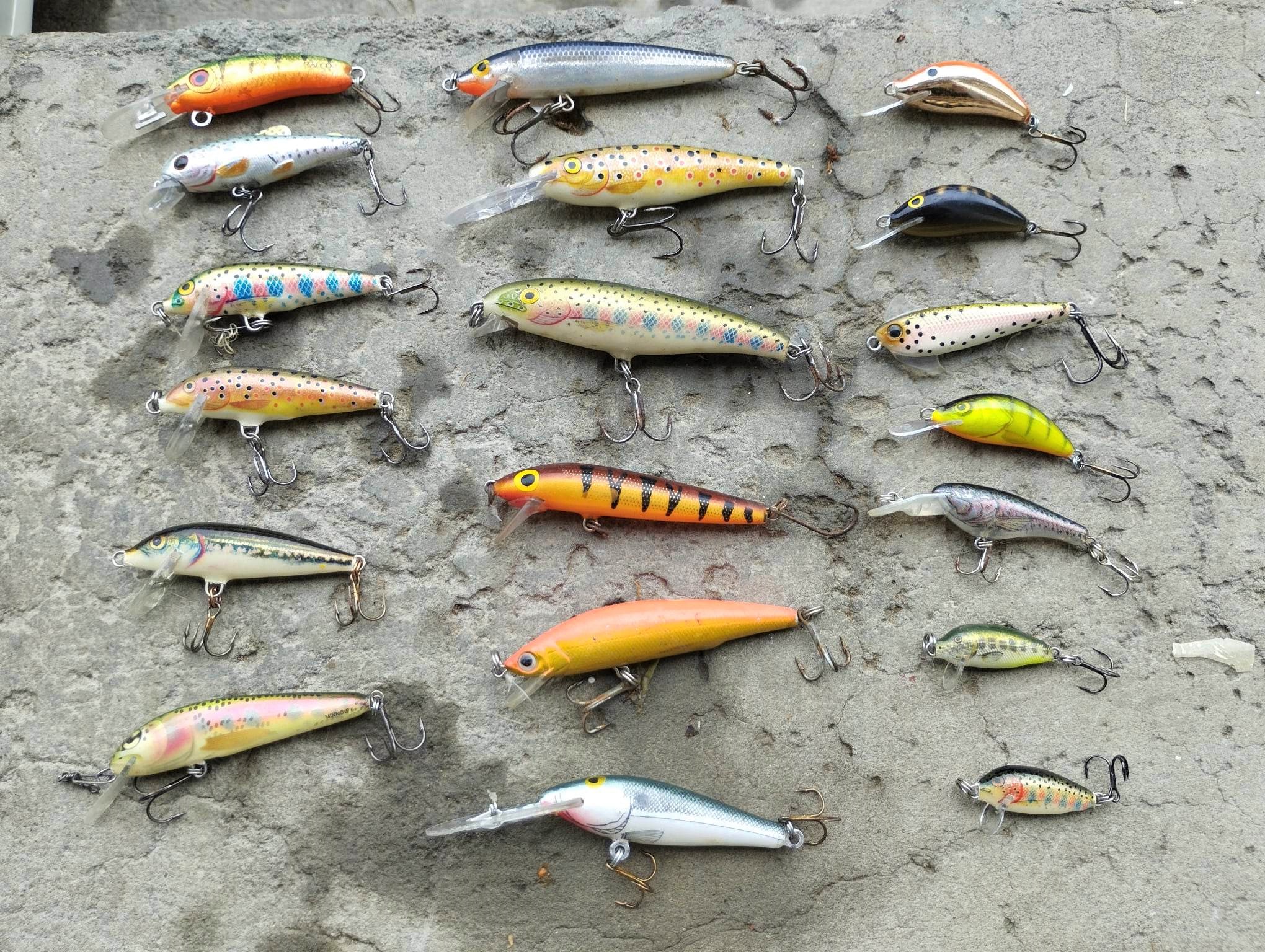My two favorite Jerkbaits for trout fishing is the Rapala Original Floater and the Dynamic Lure HD Trout. In very cold water conditions, the Jointed Rapala is also certainly worth considering. Most trout feed in water 2-3 feet deep, so it makes sense that lures that operate well at such depths typically perform the best. For slightly deeper water I fish the Rapala Floater, and for shallow ripples and extreme margins the Dynamic trout has the edge.
In this introduction, I have only scratched the surface so keep reading for even more info to get the best out of your Jerkbaits while trout fishing.
If you want to cover a lot of water quickly with long casts then the Yo-Zuri Pins Minnows are my top choice. If you can’t find them then the Rapala X-Rap is a good alternative. I generally prefer the floating or suspending versions due to trout preferring to feed in shallow water.
Jerking for Trout – (The best lure for large trout)
What are Jerkbaits and why use them for trout fishing?
Jerkbaits are highly effective lures when it comes to enticing trout. Designed to mimic distressed small fish, they are irresistible to larger trout on the prowl for an easy meal. While mayflies and nymphs make up the primary diet of trout, it’s the jerkbaits that can entice those double-digit trophy trout to strike.
Also known as stick baits, minnow baits, or hard body lures, jerkbaits are specifically designed to fool hungry trout into biting. Among various lure types, I’ve found jerkbaits to be my go-to choose for targeting big trout while spin fishing. Even highly regarded options like in-line spinners take a backseat to the effectiveness of jerkbaits in my personal experience.
In large rivers and lakes, where trout feast on a fish-heavy diet, the energy potential of a single baitfish surpasses that of hundreds of nymphs or mayflies. Trout are well aware of this fact, which is why jerkbaits often trigger their predatory instincts.
It is said that every trout fisherman has their favorite lure. My favorite trout lure is the jerkbait. While spin fishing, I have caught more big trout using jerkbaits than any other style of lure. That includes in-line spinners, which I also rate among the best trout lures.
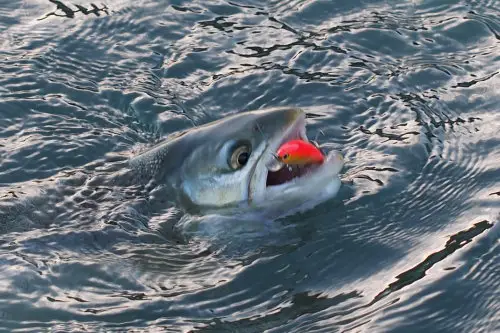
Which jerkbait casts the best?
| Model | High I rate the castability |
| Jointed Rapala | Bad |
| Rapala Orginal Floater | Poor |
| Rapala Countdown | Decent |
| Storm Original Jr ThunderStick | Decent |
| Rapala Ripstop | Decent(1) |
| Rapala Longcast | Decent(2) |
| Lucky Craft Pointer 65 | Good |
| Dynamic Lures HD trout | Good |
| Rapala X-Rap | Good |
| Yo-Zuri Pins Minnow | Very good |
Advanced Techniques to Catch Trophy Trout on Jerkbaits
One of the reasons I love fishing jerkbaits is the incredible versatility they offer. Anglers have spent years perfecting various techniques to effectively fish these lures. Contrary to the name, jerkbaits don’t necessarily require aggressive rod jerking when targeting trout. Personally, I find that a smoother, more “crankbait” style presentation yields better results.
When exploring new waters, my default approach is a steady and smooth retrieve. I begin fishing at the bottom of long pools or runs, casting slightly upstream and across the current. After a brief pause, I initiate a slow and steady retrieve slightly faster than the current. Moving a few steps upstream, I cast again and repeat the process. This method allows me to cover a significant stretch of river in a single day.
It’s crucial to remember to fish your feet first. Trout often seek shelter near the riverbank, away from the strong current. Frequently, I cast directly upstream and retrieve the lure, guiding it back parallel to the shore. I’ve lost count of the times I almost stumbled upon a trout because it was hugging the river’s edge.
In instances where trout follow my lure but hesitate to strike, I introduce subtle variations. Occasionally, I incorporate short jerks or sharp direction changes to pique their curiosity. A well-timed pause can often prompt a curious trout to finally strike. And when I say pause, I mean bringing the lure to a complete stop.
If a trout strikes but fails to get hooked, I employ a simple tactic. I pause once again and start twitching the lure, simulating the movements of wounded prey. This tactic often entices a hungry trout to return and seize the opportunity.
Specific tips and hints on catching big trout
When fishing, pay extra attention to specific features of the river, such as drop-offs, eddies, current lines, submerged trees, and large boulders within the flow. These locations are likely holding spots for trout. Whenever possible, I make short and accurate casts, ensuring that my lure passes just upstream of such promising locations. It’s always worth making second or third casts into these enticing holds. In spots where trout are actively feeding, I’m even willing to change my lure to increase my chances.
While this advice applies to all styles of trout fishing, understanding the river is paramount. Every time I spot a trout, I take note of its position and remember where it was holding. When I revisit that section of the river, I know precisely where to focus my attention. The more I explore a river, the better I become at recognizing the feeding areas of trout.
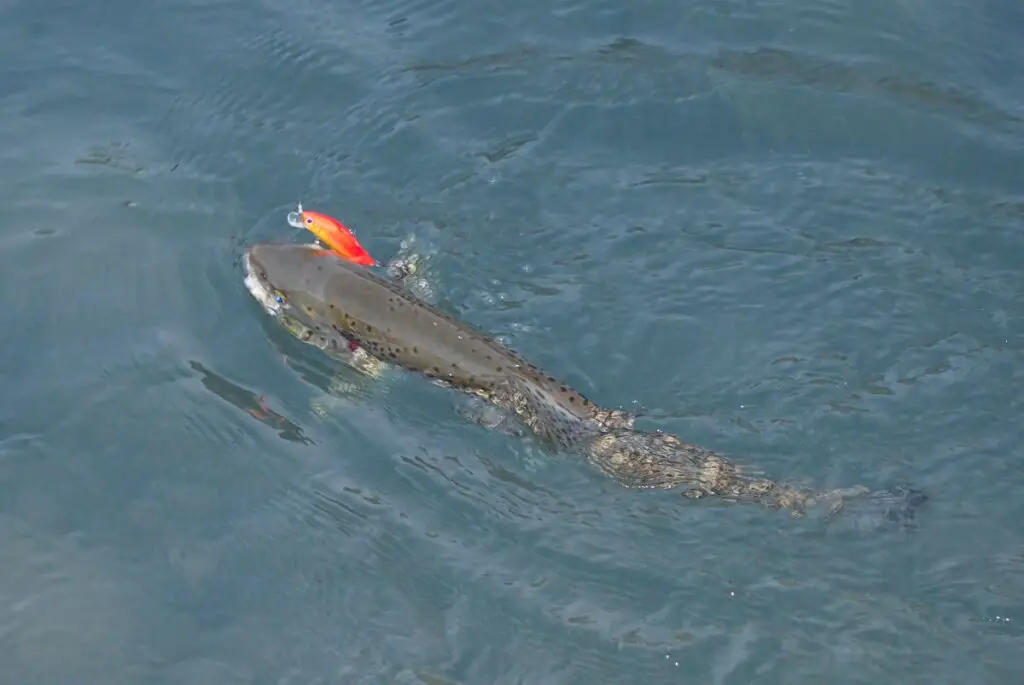
Here are a few advanced techniques I’ve learned and developed over the years. While I can’t claim to have invented them, and they might have different names within the fishing community, I’m mostly self-taught and not always up-to-date with fishing jargon.
How to Fish Jerkbaits downstream?
How to Fish Jerkbaits Downstream?
To utilize the current and extend the reach of my cast, I employ a method that allows a floating jerkbait to travel much farther downstream.
- I cast a floating lure across the current and leave the bail open, allowing the minnow imitation to slowly float downstream while the line pays out. The natural motion of the current causes the jerkbait to wobble enticingly, although strikes are unlikely to occur during this floating phase.
- Occasionally, with the use of braid or a highly sensitive rod, it’s possible to detect strikes while the lure is floating. In such cases, I may temporarily close the bail to maintain better contact with the lure, but I do so sparingly. Too much tension on the line can cause the lure to pivot toward the shore.
- Once the jerkbait has traveled far enough downstream, I initiate my retrieve. Using a slight jerking motion, I work the lure back toward me. I’ve found this technique to be exceptionally effective when trout are congregating at the mouth of a river or near an inflow into a deep pool. It enables the lure to reach areas well beyond traditional casting range and works best when paired with floating braid.
How to Fish Jerkbait Beneath Overhanging Branches?
Large trout often seek shelter and prey under overhanging vegetation, such as willow trees in my local waters. Casting beneath this wall of greenery can be extremely challenging, even from a float tube or kayak.
- For this technique, I prefer using braided or superline, specifically Berkley Fireline, as they float on the water’s surface.
- To get my lure beneath the branches, I employ a clever trick. Standing on the shore, I cast a floating jerkbait directly in front of me and promptly close the bail. The combined forces of wind and current then slowly pivot the lure around my position. As the line gradually tightens, the lure is pulled in vertically next to the shore, slipping beneath any overhanging vegetation. I’ve had great success fooling unsuspecting brown trout with this approach.
- I also use a variation of this technique when I want to fish the edge of a downstream canal. However, it’s important to note that this method is ineffective when there are submerged branches below the water’s surface.
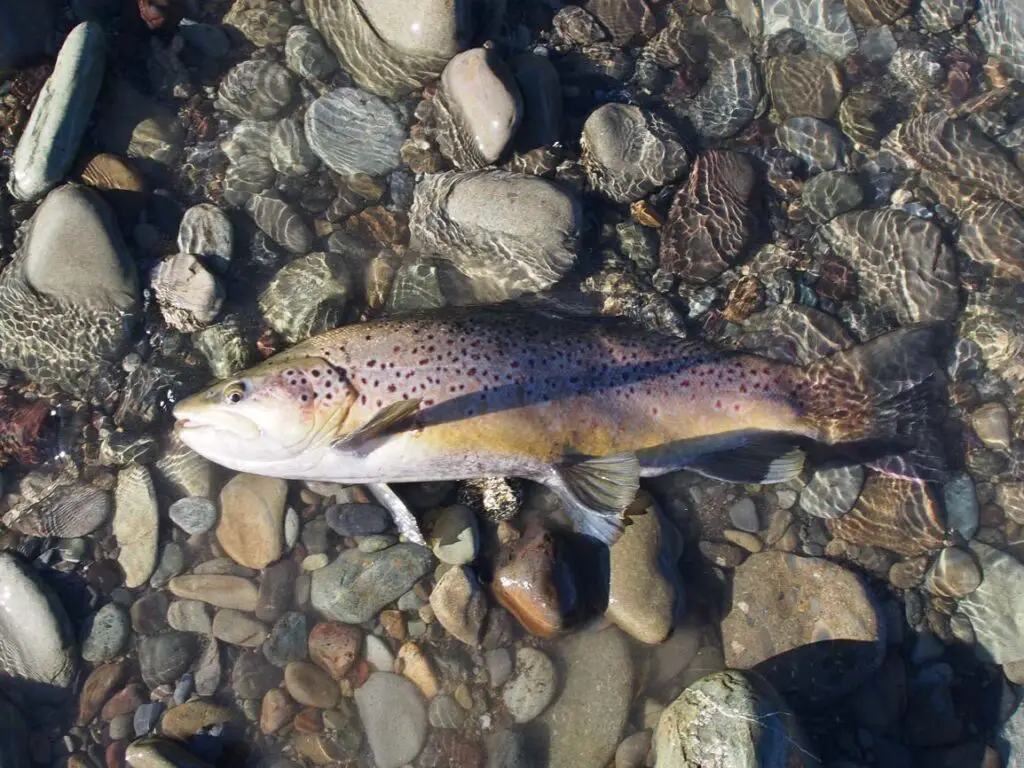
How to Fish Jerkbaits Around Submerged Trees
When faced with submerged trees or large mats of weed just below the surface, I employ a specific technique that allows me to effectively target both sides of the obstacle using a floating jerkbait with an aggressive bib. Here’s how it works:
- Casting well beyond the submerged branches or weed mat, I ensure that the lure has ample distance to dive and maneuver.
- Once the cast is made, I begin a rapid retrieve, reeling in the lure quickly. This causes the jerkbait to dive sharply, mimicking a fleeing baitfish.
- It’s crucial to closely monitor the line and observe the movement of the lure. By estimating the exact point at which the lure is approaching the branches or weed mat, I pause and allow the lure to float back to the surface. This careful control prevents the lure from getting entangled or snagged.
- With precision and care, I navigate the floating lure across the obstacle, utilizing the natural buoyancy of the jerkbait. Once the lure is clear of the obstruction, I resume a rapid retrieve, causing it to dive back down. This maximizes the time the lure spends in the strike zone, increasing the chances of enticing a strike from a lurking trout.
This technique is not limited to submerged trees alone; it also proves effective when fishing around large mats of weed that create channels between them. Trout often feed in these channels before seeking refuge under the mats. By utilizing the diving and floating actions of the jerkbait, I can effectively target these areas and entice strikes from opportunistic trout.
Jerkbaits are Excellent Trolling Lures
When it comes to trolling for trout, it’s widely known among fishermen that jerkbaits are highly effective. Whether you’re fishing in rivers or along the shallow margins of lakes, floating jerkbaits like the original Rapala or the jointed Rapala are my personal favorites for trolling.
One key factor to keep in mind when trolling for trout is to maintain a slow speed. This is not a race, as trout are not typically high-energy pelagic fish. I typically run my lures approximately 50 yards behind the boat. This distance seems to minimize any disturbance caused by the boat’s presence. You can ensure that the jerkbait is swimming correctly by observing the slight vibrations in the rod tip.
In my experience, stealth is crucial when trolling for trout. Strive to create as little disturbance as possible on the water. I greatly prefer trolling behind a kayak or canoe rather than a noisy motorboat. If you’re in a loud boat, consider trolling the lures even further back to minimize any potential spooking of the trout.
To add more variety and increase effectiveness, avoid simply trolling in a straight line. Instead, opt for a wide, lazy S-shaped path. By doing so, the lures positioned far behind will constantly cut the corners of the S-shaped path, ensuring that they are constantly covering fresh water and not traveling over areas disturbed by the boat.
It’s also worth noting that you can troll Rapalas in deeper water as well. One popular technique is to place a piece of split shot about four feet in front of the lure. Attach a small sinker behind the split shot. The split shot acts as a stopper, while the sinker will send the lure toward the bottom of the lake. Even with the sinker dragging along the bottom, a floating jerkbait is a wise choice, as it will continue to swim a few feet above the sinker, maintaining its enticing action.
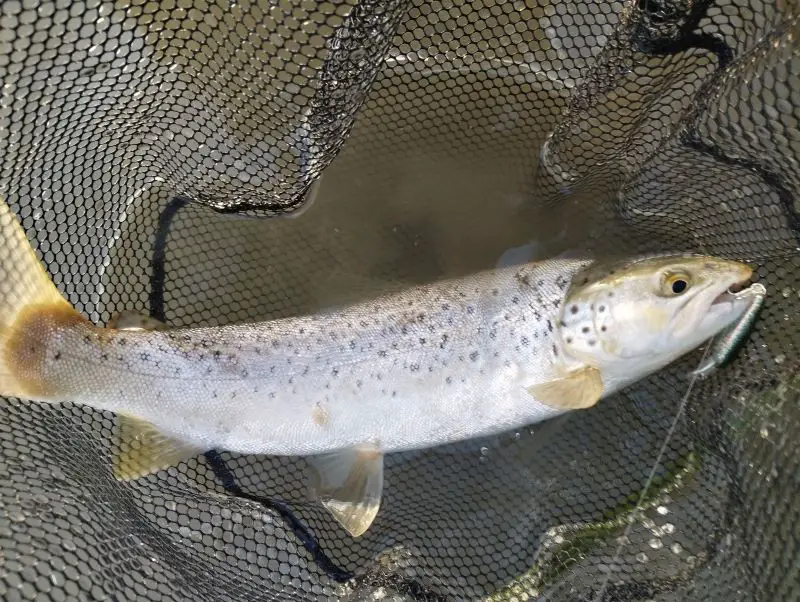
Jerkbaits vs Crankbaits
It took me longer than it probably should have to learn the difference between these two types of lures, I just thought some were skinny and others were fat and more commonly used for Bass. They both catch trout, although I personally have caught more trout on the slim jerk baits over the years.
Below I will quickly explain the difference between the two main types of hard body minnow-imitating lures.
Jerkbaits: Long and slender body and typically shorter bills. In general, jerkbaits run shallower, making them better for skinny rivers and streams. Sinking jerkbaits can be used to fish deeper water.
Crankbaits: Short and fat. Normally much deeper diving down to 25ft. If you want to surface fish a crankbait lure then lipless variations exist.
Which color jerkbait is best for trout fishing?
Jerkbaits, especially when it comes to trout fishing, are highly effective lures. Choosing the right color can significantly impact your success on the water. While popular patterns like imitations of rainbow trout, brown trout, and bright options like fire tiger or chartreuse are commonly used, there is a wide range of color options available for jerkbaits that shouldn’t be overlooked.
In clear water, it’s advisable to go for natural patterns that resemble the native baitfish of the area. These realistic colors tend to work well when trout can see clearly. On the other hand, in dirty or murky water, contrasting bright patterns tend to attract attention and increase visibility.
When fishing in bright and sunny weather, favoring silvery tones can be effective, while dull and cloudy weather calls for gold tones. These color choices take advantage of the lighting conditions and improve the visibility of the lure. Additionally, in heavily fished waters, it might be beneficial to avoid using the most popular patterns to increase your chances of enticing the trout.
Trout can be selective, and there are instances where they show a strong preference for certain colors over others. While it’s difficult to pinpoint the exact reasons behind their preferences, it could be related to the dominant color of their natural food or previous fishing pressure. Therefore, selecting the right color jerkbait can make a significant difference in your success on the water.
Personal experience and observation are valuable tools when choosing the color of your jerkbait. Drawing on previous successful trips or observing other fishermen can provide useful insights. Starting with colors that have worked well in similar fishing conditions is often a good approach.
Experimentation is key when it comes to finding the best jerkbait color for trout fishing. Adapting to the water conditions, trout behavior, and the available forage fish species will increase your chances of success. Keep in mind that trout can be unpredictable, so being open to trying different colors and adjusting based on their response is essential.
For a more comprehensive overview, I suggest reading my article on selecting the best color rapala for trout fishing.
Seasonal consideration on jerkbait selection
When it comes to selecting jerkbaits for trout fishing, considering the seasonal factors can significantly increase your chances of success. The behavior and feeding patterns of trout can vary throughout the year, and tailoring your lure color selection accordingly can make a notable difference. Here are five paragraphs highlighting the seasonal considerations for choosing jerkbait colors when targeting trout.
- Spring: During the spring season, trout become more active as the water temperatures rise. They are often found near the surface and in shallower areas. Opt for brighter jerkbait colors such as chartreuse, fire tiger, or vibrant patterns that mimic the appearance of small baitfish. These colors stand out in the clearer waters of spring and attract the attention of hungry trout.
- Summer: As summer arrives and water temperatures increase, trout tend to move to deeper and cooler areas of the water column. Choose natural and subtle colors like silver, pearl, or shiner patterns that resemble the native forage in the specific water body. These colors imitate the baitfish and insects that trout typically feed on during this season.
- Fall: Fall brings cooler temperatures and changes in the natural food sources available to trout. As they prepare for the spawning season, trout become more aggressive and territorial. Consider using jerkbaits with more contrasting and darker color combinations, such as black, purple, or olive. These colors mimic wounded or territorial prey and can trigger aggressive strikes from aggressive trout.
- Winter: In winter, trout activity slows down, and they tend to seek out slower-moving prey. Opt for more natural and subtle colors like brown, olive, or earthy tones that blend with the winter environment. Trout have heightened sensitivity to movement during this season, so select jerkbaits with subtle actions and avoid overly flashy or vibrant colors.
- Transitional Periods: During the transition periods between seasons, when trout are adjusting to changing conditions, it can be beneficial to experiment with a variety of jerkbait colors. This allows you to adapt to the trout’s shifting preferences. Pay attention to water clarity, weather conditions, and the behavior of the trout in order to make informed color choices. Consider using versatile colors like gold, yellow, or silver that can work effectively in different conditions.
By considering the seasonal factors and adjusting your jerkbait colors accordingly, you can enhance your trout fishing success. Remember to also observe the specific conditions of the water body you’re fishing in, as variations in water clarity, temperature, and available prey can further influence trout behavior. Stay adaptable and be willing to experiment with different colors to find the combinations that entice the trout and increase your chances of landing that prized catch.
Rapala Original Floater: A Timeless Jerkbait for Trout Fishing Success
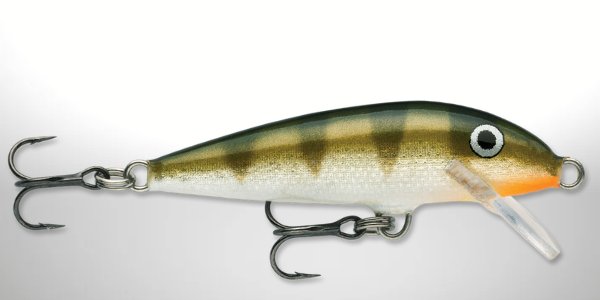
The Rapala Original Floater stands out as one of the most popular and widely used lures in the world, and for good reason—it consistently delivers exceptional results. Whether you’re fishing in rocky rivers, lakes, or estuaries, the floating Rapala is a versatile and highly effective lure that can bring success to anglers of all skill levels. Its versatility extends to trolling as well, making it an excellent choice for those who prefer fishing from a dinghy or kayak.
If you ask any experienced fisherman about their go-to jerkbait for trout fishing, chances are the original floating Rapala will be at the top of their list. This lure boasts a classic and proven design that has stood the test of time. Whenever I head out for a day of spinning for trout, I always make sure to have several Rapala Original Floaters in my tackle box.
The Rapala Original Floater comes in a range of sizes to accommodate different fishing conditions and preferences. For most trout fishing situations, I find that the 2-inch F05 and slightly longer F07 sizes strike the perfect balance between versatility and effectiveness, making them my most frequently used sizes.
However, there are instances where larger sizes can be beneficial. When the water is cloudy or if the trout are actively feeding on larger baitfish, it’s worth considering the larger F09 size. Additionally, if you’re targeting particularly large trout, the F09 size might offer an enticing presentation. It’s worth noting, though, that personal experience has shown that even the smaller F05 size has the potential to land impressive trout.
Jointed Rapala: A Wounded Baitfish Imitation for Sluggish Trout
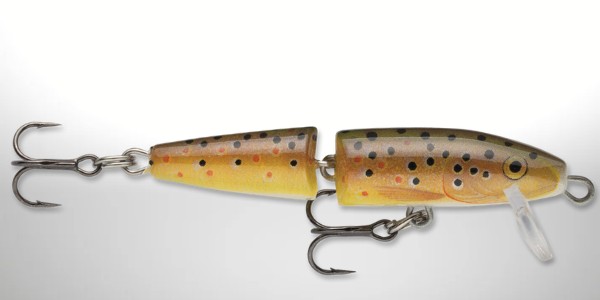
The Jointed Rapala is a standout jerkbait that sets itself apart with its unique design, featuring a split into two sections with a jointed middle. This innovative construction provides an irresistible action that perfectly mimics a wounded baitfish when retrieved slowly. Even at the slowest retrieve speeds, the Jointed Rapala maintains its enticing movement, making it a go-to lure for enticing trout.
This lure is particularly effective in shallow to mid-depth water, although it can also be adapted for deeper retrieves by adding additional weight. It excels in situations where trout are sluggish and less willing to chase after more lively prey, making it an ideal choice for cold water conditions.
When fishing with the Jointed Rapala, it’s crucial to resist the temptation to fish it too actively. This lure requires a slow and delicate presentation to truly showcase its lifelike action. Retrieving it with abrupt jerks can lead to tangles and disrupt the desired movement. Instead, opt for a subtle and patient retrieve to maximize its effectiveness.
It’s worth noting that when replacing the treble hooks with single hooks, achieving the desired action may be more challenging, especially with the smaller sizes of the Jointed Rapala. It’s recommended to experiment with different hook setups to find the balance between hooking efficiency and maintaining the lure’s enticing action.
Best Shallow Water: Dynamic Lure HD Trout
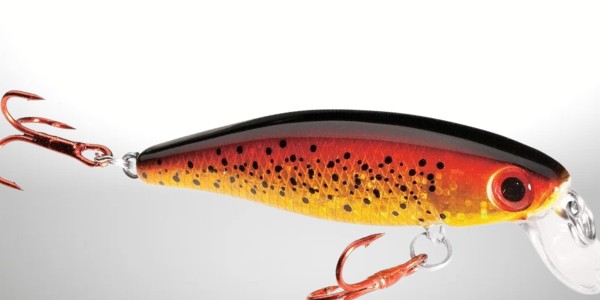
The Dynamic Lures HD Trout is a jerkbait that stands out with its exceptional action on a straight retrieve. Its tail portion exhibits a captivating side-to-side wobble, mimicking the natural swimming action of a trout. This lifelike movement is further enhanced by the vibrating wobble generated by internal ball bearings. The combination of a realistic wobble and subtle vibrations makes the HD Trout highly effective in enticing even the most cautious trout to strike.
Measuring at 2.25″ in length and weighing 1/10 oz, the HD Trout falls between the sizes of Rapala F5 and F7. It offers a range of 20 different colors to choose from. As with most jerkbaits in this size range, it may require some practice to cast, but the inclusion of ball bearings aids in achieving better casting distances.
Due to its slow sinking nature, the HD Trout performs exceptionally well in streams and shallow creeks. It proves to be particularly deadly when worked over shallow weed beds, where its shallow diving ability shines. However, in very turbulent water, it may not reach the bottom as effectively.
The outstanding wobble on a straight retrieve also positions the HD Trout as a top choice for trolling, especially when targeting trout holding close to the surface.
Crafted from durable and impact-resistant ABS plastic, the HD Trout boasts excellent durability. While the coating may eventually scratch with use, it remains as resilient as other lures on the market. The hooks come sharp out of the box, although some users have noted that they may start to straighten after catching multiple fish. However, it is worth mentioning that some anglers find Yo-Zuri hooks to be tougher in comparison.
When comparing the HD Trout to Rapala, the straight retrieve action is often preferred, but Rapala lures tend to excel in their dancing motion on the jerk. Additionally, Rapala lures have a tendency to dive deeper and faster, making them more versatile for deeper water applications.
In summary, the Dynamic Lures HD Trout is an outstanding jerkbait for shallow water fishing, particularly on a straight retrieve. Its lifelike action and versatility make it a compelling choice, potentially even surpassing other options as the go-to lure for trout in shallow water situations.
Best Affordable: Storm Original Jr ThunderStick
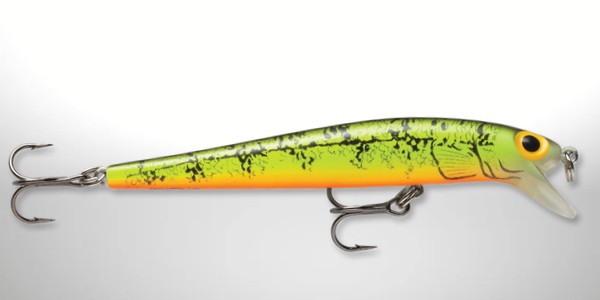
The Storm Thunderstick is a jerkbait that stands out for its effectiveness and affordability. It offers features commonly found in premium lures, including an internal rattle that adds an enticing sound to attract trout.
One notable aspect of the Thunderstick is its impressive finish. The patterns on the lure are highly detailed, surpassing those found on many more expensive alternatives. Storm takes pride in equipping the Thunderstick with three VMC treble hooks, the same hooks used by Rapala on their jerkbaits. These hooks have proven to be reliable and durable, with no reports of them straightening or breaking when catching trout.
However, it’s important to note I have a significant concern when using the Thunderstick, especially for catch and release purposes. I have observed that trout tend to engulf the Thunderstick whole, resulting in the lure being hooked in multiple places, sometimes deep. This has led to higher mortality rates for released trout compared to other jerkbaits. Even removing the third hook did not alleviate this issue. Therefore, caution should be exercised when using the Thunderstick for catch and release fishing, as it may not be as suitable for minimizing harm to the fish.
Overall, the Storm Thunderstick offers a cost-effective option with excellent features and a detailed finish. However, due to the reported issues with hooking and potential harm to released trout, it’s important to consider these factors and exercise caution when using this lure.
Best Deep Retrieve: Rapala Countdown
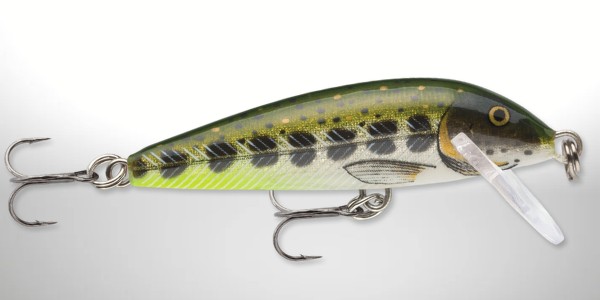
The Rapala Countdown is a unique jerkbait that offers sinking and suspending capabilities. One of its notable features is its consistent sinking rate of one foot per second when stationary in the water. This makes it an excellent choice for targeting fish holding at specific depths.
To effectively use the Countdown, you can employ a technique where you cast the lure out and across the target area and allow it to sink for the desired duration. For example, if you want to reach fish holding on the bottom of a 5-foot-deep pool, you would wait approximately five seconds for the Countdown to sink before initiating your retrieve.
This technique requires finesse and precision, but with practice, the Rapala Countdown can be effectively presented where the trout are holding. It has proven to be highly successful in trout fishing scenarios and is often regarded as one of the top performers among jerkbaits.
As with other Rapala lures, the Countdown is available in a wide range of sizes to cater to different fishing situations. For most trout fishing scenarios, the CD5 and CD7 sizes are recommended and widely used.
In summary, the Rapala Countdown is a versatile jerkbait that combines sinking and suspending capabilities. Its ability to sink at a consistent rate allows for precise depth targeting, making it a reliable choice for trout fishing. With its range of sizes, it offers flexibility to match various fishing conditions. The Countdown is a highly recommended lure for anglers looking to fine-tune their presentations and effectively reach fish at specific depths.
Best Premium: Lucky Craft Pointer 65
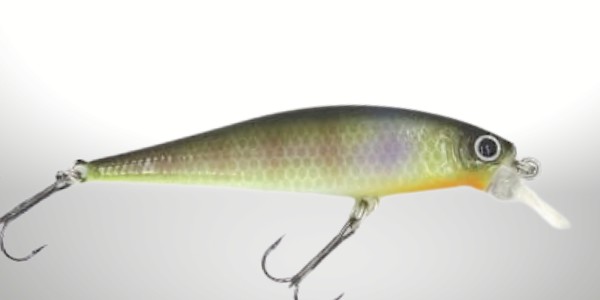
The Luckycraft Pointer 65 is a jerkbait that offers exceptional performance and quality, albeit at a higher price point compared to other options on the list. Its effectiveness in catching trout is well-known and has yielded significant success for many anglers, including myself.
When retrieved steadily, the Pointer 65 exhibits a tight and fast wobble, simulating the movement of a wounded baitfish. Its rip action brings it to life, mimicking the movements of a fleeing prey. The lure is available in both suspending and floating versions, providing options for different fishing conditions. Its action during pauses is subtle, with slight twitches that mimic the behavior of an escaping baitfish.
Measuring 65mm (2 1/2″) in length, the Pointer 65 is slightly longer than a Rapala 7 and is considered an ideal size for trout fishing. Some anglers even opt for larger sizes in the hopes of landing trophy-sized trout.
The construction of the Luckycraft Pointer 65 showcases high-quality components and boasts a lifelike finish. Its overall build quality appears to be a step above that of Rapala lures, providing added durability and longevity.
One standout feature of the Pointer series is the internal brass weight mechanism, which contributes to a low center of gravity. This unique design allows the lure to maintain its wobbling and vibrating action even after the retrieve is paused, enhancing its effectiveness in triggering strikes. The added brass weight also facilitates longer and more accurate casts, even in challenging conditions such as strong headwinds.
While the Luckycraft Pointer offers exceptional performance, it’s important to consider its higher price compared to other jerkbaits, including Rapalas. However, the premium price is partly justified by the higher quality of its components and construction.
It’s worth noting that I exercise caution when using the Luckycraft Pointer around submerged trees or other areas prone to snags, especially if retrieval is difficult. In such situations, it’s important to assess the risk versus reward before casting the lure.
The lifelike finishes of the Luckycraft Pointer make it particularly effective in ultra-clear water conditions when targeting shy fish. Colors such as American Shad, Laser Rainbow Trout, Brown Trout, Brook Trout, and MS Herring are excellent options. In cloudy or discolored water, it’s beneficial to use more vibrant colors like Aurora Craw, Aurora Gold, Tiger Perch, or Red Musky to enhance visibility and attract attention.
In conclusion, the Luckycraft Pointer 65 is a premium jerkbait known for its exceptional performance and lifelike finishes. While it comes at a higher price, its quality construction, unique features, and effectiveness in triggering strikes make it a worthwhile investment for serious trout anglers.
Best Suspending: Rapala X-Rap
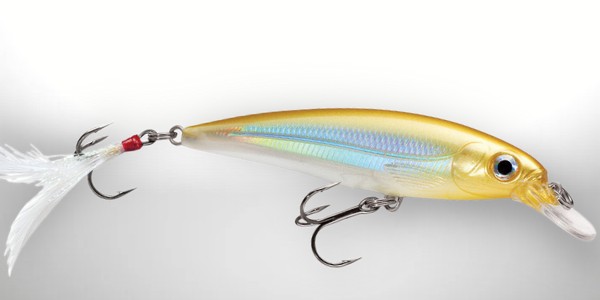
The Xrap series by Rapala are now available in several different forms such as floating, sinking and suspending. The Xrap series offer several advantages over the regular series. These lures feature a more pronounced action and a higher quality, more detailed finish, which adds to their appeal and effectiveness.
One of the standout features of the Xrap series is that they are suspending lures. This characteristic allows for versatile presentations at various depths. By casting out, reeling in a bit of line, and giving a few jerks, the Xrap lure remains stationary for the most part during pauses. This pause can often entice strikes from interested fish, making it a valuable technique in attracting trout.
Another effective use of suspending jerkbaits, such as the Xrap, is when fishing downstream. By allowing the current to carry the lure beneath overhanging vegetation and then holding it there, you can position the jerkbait right in the strike zone of trout that often hunt from the cover of vegetation. This technique increases the chances of triggering strikes from trout lurking in such areas.
The Xrap lures, like many of their modern counterparts, are constructed from durable ABS plastic, which offers excellent detail and durability. While the increased details may not necessarily trigger more strikes, they do contribute to the lure’s overall lifelike appearance, which can be beneficial, especially in super clear water conditions where trout may scrutinize their prey more closely.
One notable feature of Rapala Xraps is the inclusion of a dressed terminal hook. The theory behind this addition is that the dressings on the hook attract predatory fish. However, it’s worth noting that many trout have been caught on lures with plain hooks, so the effectiveness of dressed hooks in attracting strikes may vary and is not entirely conclusive.
In summary, the Xrap series from Rapala offers enhanced action, a higher quality finish, and the advantage of being suspending lures. These lures provide versatile presentations at various depths and can be effective in triggering strikes from trout. While the added details and dressed terminal hooks may have some impact, their influence on attracting trout strikes is not definitive and can vary depending on fishing conditions and individual preferences.
Best Long Cast: Yo-Zuri Pins Minnows
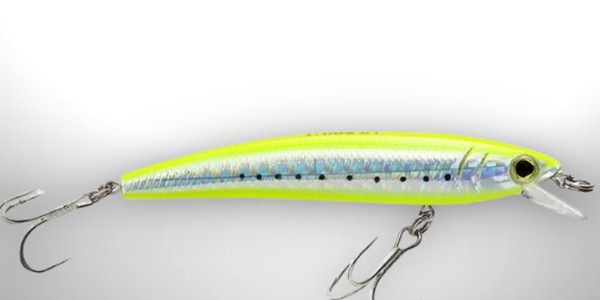
The Yo-Zuri Pin Minnow is a popular jerkbait known for its realistic design and action-packed performance. Yo-Zuri, with over 50 years of experience in crafting fishing tackle, has produced some of the most lifelike lures on the market, and the Pin Minnow is one of their original designs.
One standout feature of the Yo-Zuri Pin Minnow is its magnetic weight transfer system. This system utilizes small channels inside the lure that allow ball bearings to roll freely. When the lure is cast, the ball bearings roll to the end, resulting in longer and more accurate casts. This feature can be especially advantageous when targeting trout in larger bodies of water or when trying to reach distant feeding areas.
The Pin Minnow is constructed from a proprietary polycarbonate material, and the design is laser-etched directly onto the plastic body. The lure is then coated with a scale-patterned foil, creating a durable and lifelike finish. Even after years of use, the Pin Minnow retains its durability, with only a few scratches and minor flaking on its coat. The hooks may need to be replaced over time as they become blunt, but the overall construction of Yo-Zuri lures ensures that they are built to last.
Just how durable are yo-zuri baits? I still own and fish with the first Yo-zuri pin minnow lure I purchased. It remains one of my favorite lures; I have fooled countless brown and rainbow trout with it. After fifteen years of use, its coat only shows a few scratches and some minor flaking. I have replaced the hooks several times; they do eventually become blunt. So, in my experience, Yo-zuri lures will more likely be lost before they will break.
Overall, the Yo-Zuri Pin Minnow offers anglers a reliable and lifelike jerkbait option that has proven successful in fooling trout. With its high-quality construction, realistic design, and the added advantage of the magnetic weight transfer system, this lure is a worthy addition to any angler’s tackle box.
Conclusion
In conclusion, jerkbaits are an essential weapon in any trout angler’s arsenal. From the classic Rapala to the action-packed Yo-Zuri, these lures offer versatility and lifelike presentations that entice trout strikes. Whether you prefer the steady retrieve of the Dynamic Lures HD Trout or the suspending allure of the Xrap series, there’s a jerkbait to suit every fishing condition. While some lures may demand a premium, their durability and proven effectiveness make them worth the investment. So grab your favorite jerkbait, cast it out, and let the trout be the judge. Happy fishing!

